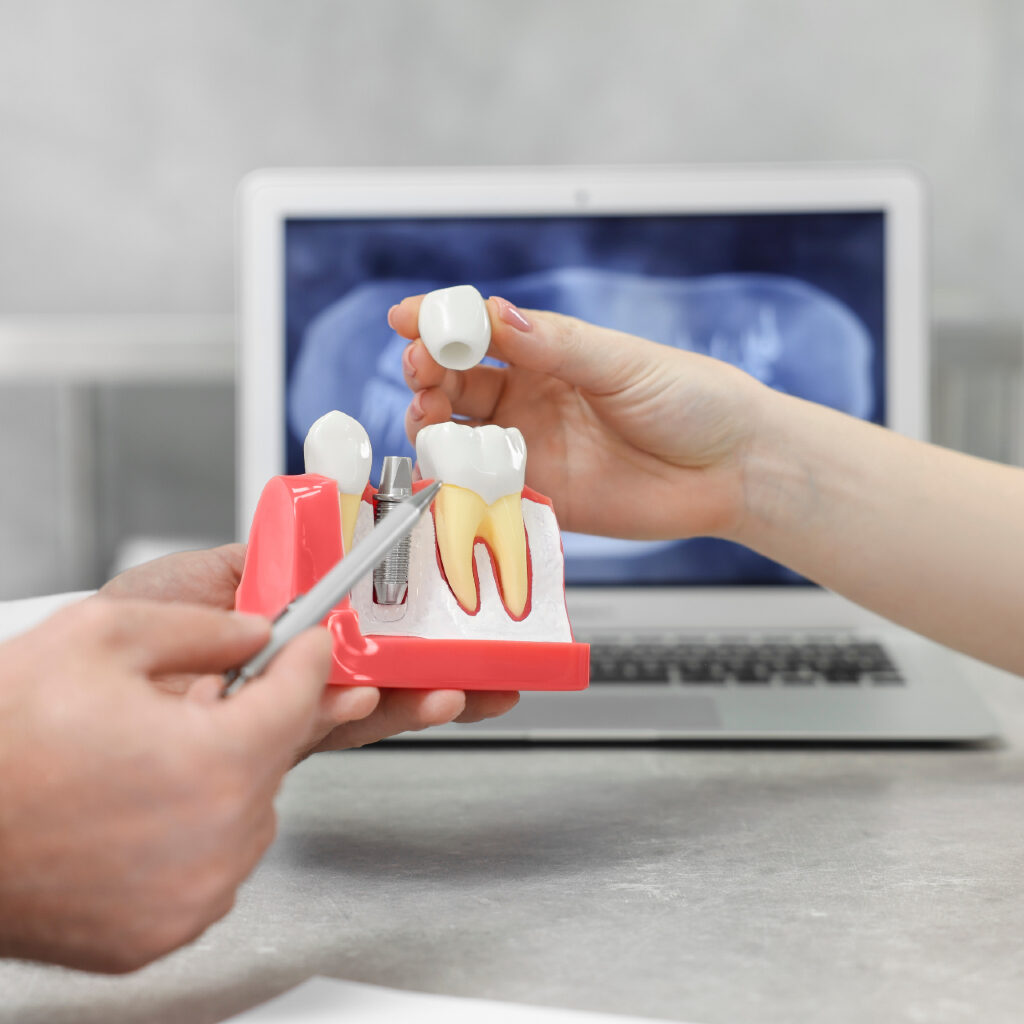Tooth Extraction in Elizabeth, NJ
Having good oral health can help people keep their natural teeth for a lifetime. However, sometimes the best thing to do is have a tooth extracted. A tooth extraction procedure means that there is no other way to save the tooth and that the only way to prevent further health concerns is to remove the tooth completely.
Having a tooth removed can sound scary. At Elizabeth Oral Surgery Group, we have the necessary expertise, skills, and compassion to ensure our patients feel comfortable from beginning to end. Our facility in Elizabeth is unmatched when it comes to patient care because we understand patient care begins the moment you walk in the door and all the way until you’ve fully recovered.
What Is a Tooth Extraction? Is It Necessary?
A tooth extraction is a procedure in which the tooth is completely removed from its socket. There are a variety of reasons why this may be the best solution, including:
Impaction
Tooth impaction is the result of the growth of one tooth pushing directly against another, which makes your tooth susceptible to infection. This can then lead to redness, swelling, tenderness, or bleeding gums. People who’ve experienced this condition often feel pain and swelling around the jaw and may also find it difficult to open their mouths.
Typically, the tooth impacted is a wisdom tooth, also known as the third set of molars. They often do not have enough room to grow normally and healthily. Instead, they grow inward towards the rest of the teeth. In these cases, the best way to proceed is with a wisdom tooth removal surgery to prevent further damage to the other teeth.
Overcrowding
In addition to the pain, tooth impaction can also cause overcrowding of the teeth. This can further cause the other straight and aligned teeth to become crooked. Removing the problematic teeth can open up free space for the rest of the teeth to spread out as they need.
Tooth Decay
Plaque and the build-up of tartar can also cause tooth decay. These deposits eat away at the teeth’s enamel making them brittle and weak. Conditions that get bad enough can cause infection resulting in intense pain, swelling, and redness. Once a tooth reaches this point of decay, it can then become necessary to remove the tooth and replace it with a dental bridge to prevent further oral health concerns.
Periodontal or Gum Disease
Similar to tooth decay, gum and periodontal disease is the result of build-up and plaque on the teeth. While there are many conditions that people can develop in the gums and in the bone surrounding the teeth, the most common are periodontitis and gingivitis. Gingivitis is an inflammation of the gums surrounding the teeth, whereas periodontitis is the inflammation of the tissue and bones surrounding the teeth.
When the integrity of the bone or gum around the tooth deteriorates too much, it becomes necessary to remove the tooth and replace it with a dental bridge or crown to preserve the surrounding teeth.
Trauma
When people think of accident trauma, they think of head injuries or broken arms; not many picture oral injuries. However, teeth are some of the first casualties in an accident. Whether it’s a stray baseball coming at them too fast or being in a car accident, traumatic dental accidents can have dire consequences on a patient’s oral health.
Some accidents cause a tooth to become too damaged to save. In these cases, tooth extraction is necessary for the patient’s recovery. A damaged tooth can lead to severe infection that eventually requires a procedure such as a root canal which can be just as painful.
What Happens During a Tooth Extraction Procedure?
To start the procedure, local anesthesia is applied to numb the affected tooth and surrounding gum tissue. Then, the oral surgeon will gently loosen the tooth and carefully lift it from its socket. Sometimes, the oral surgeon may need to make an incision in the gums to access the tooth, especially if the tooth is badly decayed or has broken off at the gum line. Once the tooth is extracted, the socket is cleaned and disinfected. In some cases, the surgeon may need to place a dental bone graft to prevent bone loss in the jaw. At the end of the procedure, stitches may be placed to help promote the healing process.
What Happens After the Tooth Extraction?
When the procedure is done, the oral surgeon will place a piece of gauze over the extraction site. The patient is asked to close their mouths firmly and with steady pressure. This helps slow the bleeding so a blood clot can form. A blood clot may sound bad, but it is a normal aspect of the recovery process. It promotes healing and helps to reduce the risk of a dry socket. The gauze will be taken out once the bleeding has slowed enough. However, a patient may experience light bleeding throughout the first 24 hours.
Need a Tooth Extraction? Contact Elizabeth Oral Surgery Group
At Elizabeth Oral Surgery Group, we help our patients make well-informed decisions about their oral health and ensure that they have the information they need to feel in control the whole time. Needing to have a tooth extraction isn’t something to take lightly. It’s necessary to have an experienced and knowledgeable oral health professional at your side.
The team at Elizabeth Oral Surgery Group in Elizabeth is here to help. We are committed to helping our patients not just find pain relief but find joy in their smiles again. Contact us today to schedule an appointment at (908) 774-8196 or complete our online contact form for more information.

